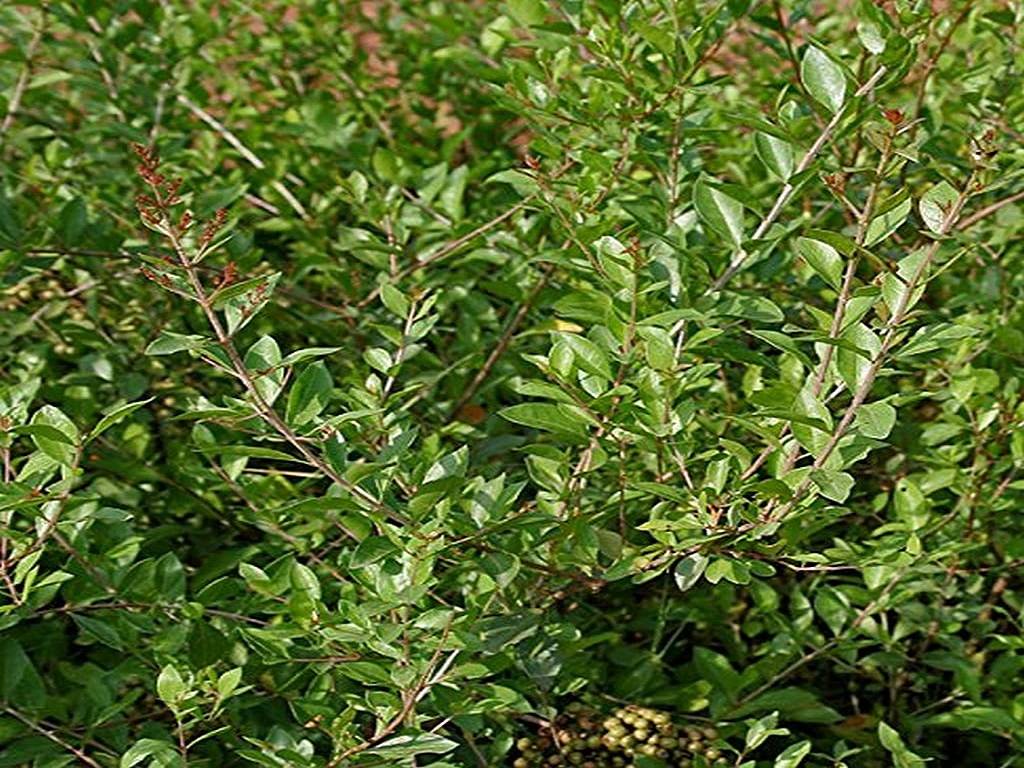
Henna (Lasonia inermis), also known as Mehndi Plant is a perennial shrub, which is commercially grown for leaf production. It is also referred to as Madyantika due to its fragrant aroma in flowers. Henna leaves contain a pigment compound called 'lasone' which is used for coloring hair and body.
Mehndi is a natural plant, whose leaves, flowers, seeds, and bark have medicinal properties and it is a major source of natural color. During festivals, henna decoration on the palms of married women is considered a symbol of beauty and gentleness. The glory of its disease-preventive properties has been beautifully described in Ayurveda. It is considered auspicious to apply mehndi on the hands not only on marriage but on many important festivals. While henna enhances the beauty of palm and hair, it is also very beneficial for health.
Benefits of Mehendi Henna (Mehendi) Cultivation:
-
In the uncertainty of monsoon, henna is a versatile crop providing fixed income.
-
Rainfed cultivation of henna can be done successfully with limited manure-fertilizer use and minimal management.
-
Henna is effective in preventing soil erosion, maintaining soil cover, and increasing water conservation in the soil.
-
Due to its use in every household as a beauty cosmetic, it is easy to market.
-
Being a multi-year crop, the yield and income is assured every year and there is no need to plant a new crop every time, that is, plant it once and yield for many years.
-
Useful for crop protection in fields or siege of gardens.
-
The henna plant keeps the surrounding environment fragrant.
-
Along with makeup, henna is an important medicinal plant in Ayurveda.
Land preparation
For the successful cultivation of henna, bund the field before the rainy season so that water can be conserved. After clearing the weeds from the field, do a deep ploughing with a disc harrow and cultivator. With the onset of rain, after ploughing the field with a disc harrow and cultivator, the field should be leveled by running a pat.
Varieties of Henna:
Collect seeds from similar plants with healthy, broad, and dense leaves of henna. When the seeds are ripe, the seeds should be used for sowing after plucking the seeds from the plants and drying them in the sun. Indigenous varieties whose twigs grow thin and straight up, are suitable for cultivation. High yielding varieties are S-8, S-22, and Khedbrahm have been developed from Kajri, Jodhpur.
Sowing and planting time:
Henna should be sown in February-March (when the atmospheric temperature is 25-30 °C) and transplanting should be done in July-August after the arrival of the monsoon. Henna can be planted directly by seed or by planting seedlings in the nursery or by grafting method. But for commercial farming, the planting method is the best.
Manure and fertilizers requirements:
At the time of final ploughing of the field, mix 8-10 tonnes of rotted manure per hectare in the soil and apply 60 kg of nitrogen and 40 kg of phosphorus per hectare to the standing crop every year. After the first rain, a full quantity of phosphorus and half quantity of nitrogen should be mixed in the soil at the time of weeding and the remaining quantity of nitrogen should be given after 25 to 30 days after it rains. After this, at the time of first weeding and hoeing, 40 kg nitrogen per hectare should be given on both sides of the rows of plants in established henna fields.
Harvesting:
Generally, the henna plant is harvested twice a year i.e., March to April and November to October. Store the henna leaves in jute sacks after harvesting, and threshing. Do not place the leaf stems outside in the sun or open space.
Yield:
Under normal conditions, henna can yield about 15 to 16 quintals per hectare of dry leaves per year by adopting advanced cropping methods. 7-8 quintal yield is obtained for the first 2-3 years of plantation.










